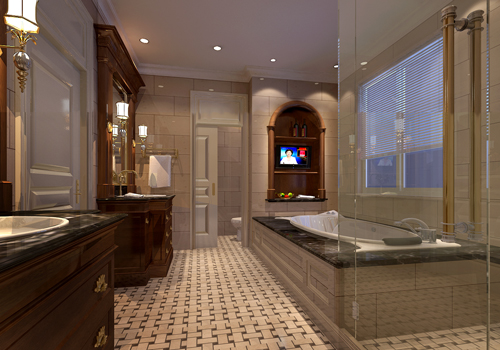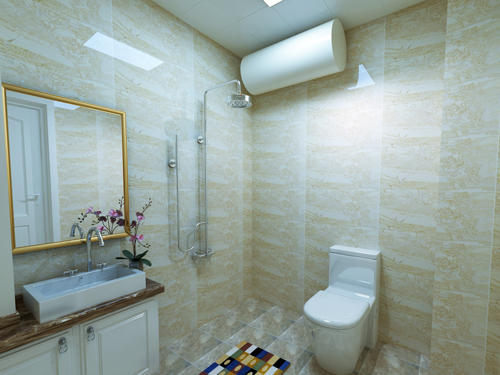
 First, why do you want to leave seams
First, why do you want to leave seams  Because the brick is straight or trimmed, the brick surface and the side surface are at right angles of 90 degrees, so when two pieces are tiled together, the gap between the brick and the brick is very small, so that due to the small gap, the overall Sexuality is stronger, so the friends who pursue the effect let the workers make a seamless paving. For the above approach, I would very much appreciate the spirit of the pursuit of perfection, but there is always some distance between the effect and the reality. Not only does this approach fail to achieve very good results, it is also a very wrong practice.
Because the brick is straight or trimmed, the brick surface and the side surface are at right angles of 90 degrees, so when two pieces are tiled together, the gap between the brick and the brick is very small, so that due to the small gap, the overall Sexuality is stronger, so the friends who pursue the effect let the workers make a seamless paving. For the above approach, I would very much appreciate the spirit of the pursuit of perfection, but there is always some distance between the effect and the reality. Not only does this approach fail to achieve very good results, it is also a very wrong practice. 1ã€The reasons why tiles cannot be tiled seamlessly:
1) Tiles have errors
As we all know, any product can not be produced in the same size, weight, etc., as long as it is consistent with the relevant standards, we can call it an error, for the same batch of tiles of the same model of the product There may be deviations in length, straightness, straightness, etc., and there is no such thing as a tile that does not have any error.
2) Construction will also have errors
In addition to the non-standard construction methods, workers will have some errors in the collage. The most important point is that any object has thermal expansion and contraction, and tiles are no exception. If the gap is too small, the ability of the ceramic tile to adapt to the environment will be deteriorated. Due to the temperature change, the tile will be broken and the normal service life of the tile will be reduced.

2, common tile joints suggested
1) When laying tiles, such as seamless bricks, and polished tiles, the size of the joints should generally be around 1-1.5mm and not less than 1mm. A toothpicks can be used as a reference.
2) Archaic tiles generally have a slightly wider seam, typically 3-5mm.
3) The outer wall of the balcony culture bricks generally leave about 5mm.

 Second, why do tile laying sticking
Second, why do tile laying sticking  Tiles in the paving process, you must leave the seam, the size of the seam depends on the specific product, and since the left seam, then it can not be used so empty? Of course not. In general, the tiles need to be seamed after paving. The following describes the problems of the materials used in the jointing and the timing of the jointing.
Tiles in the paving process, you must leave the seam, the size of the seam depends on the specific product, and since the left seam, then it can not be used so empty? Of course not. In general, the tiles need to be seamed after paving. The following describes the problems of the materials used in the jointing and the timing of the jointing. 1ã€Cooking material
The materials used for the conventional jointing are cement, caulking agent, putty powder and so on. Among these types of materials, putty powder and white cement are more traditionally used materials. Nowadays, the use of cement bricks as the jointing material is mainly used for balcony culture bricks. For example, paving balcony bricks directly use ordinary cement mortar. can.
Putty powder, white cement waterproof performance, resistance to scrubbing performance is worse, now, the family decoration process, in the kitchen floor, the living room floor tile joints generally do not use, now basically choose a professional tile caulking Agent (also known as caulking agent).
2, the type and selection of seaming agent
Grafting agent is mainly divided into sand and sand-free in the market. In general, light-walled tiles and vitrified tiles are suitable for use without sand, and paving matt bricks and antique tiles are suitable for sand.
There are two ways to choose the color of the seaming agent. One is the proximity method, the choice of the seaming agent is similar to the color of the tile, and the second is the contrast method. The color and the tile color form a strong contrast.

3, the choice of pointing time
Generally, the time selected is 24 hours after the tiling, that is, after the tile is solidified, the time of the jointing is too early, which will affect the tile that is tiled, resulting in uneven or loose. In addition, before the jointing, you need to clean the dust in the cracks in the tiles.
Conclusion: The details often determine the final effect of home decoration. Therefore, for laying tiles, leaving seams seems to be a trifle, but it has a great impact on future use. The above is related to how to deal with tile gaps when laying ceramic tiles. For more information, please pay attention to this website information channel.
Tile Laying Decoration Construction Knowledge Renovation Material Knowledge Cement Family Renovation Living Room Antique Tiles Exterior Wall Tiles Balcony Tiles
Carbon Black,Carbon Black Sensor,Carbon Black Defense,Carbon Black Mascara
PVC resin serie,Lubricating agent series Co., Lt d , http://www.pvcseries.com